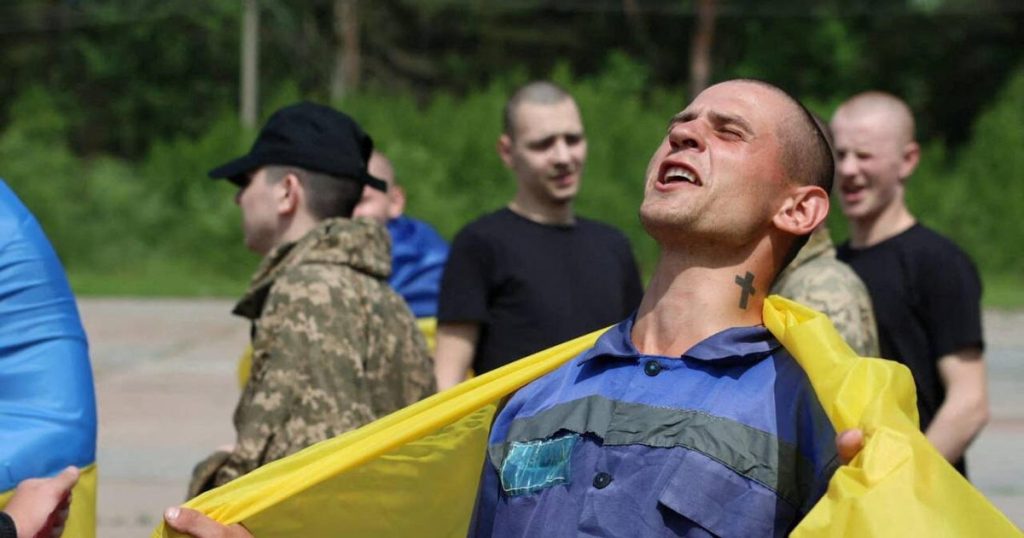In a significant development amid the ongoing conflict between Ukraine and Russia, Ukrainian President Volodymyr Zelenskyy announced a new series of prisoner exchanges set to occur over the coming days. The announcement comes as hostilities escalate, with Moscow launching drone attacks on Ukrainian territory. The exchange aims to bring back wounded soldiers and those under the age of 25 as both nations remain entrenched in ongoing negotiations that have yet to yield substantial results.
| Article Subheadings |
|---|
| 1) President Zelenskyy’s Announcement of Prisoner Exchange |
| 2) Conditions and Background of the Exchange |
| 3) Escalation of Drone Attacks by Russia |
| 4) Reactions from Military Officials |
| 5) Consequences of Recent Attacks |
President Zelenskyy’s Announcement of Prisoner Exchange
On Monday, President Volodymyr Zelenskyy took to social media to announce the commencement of a new prisoner exchange program with Russia. He revealed that the exchange would transpire in multiple rounds, with the first group of captives from Russia already received by Ukraine. During his announcement, he highlighted that among those being brought back were wounded individuals, the severely wounded, and those under the age of 25. This strategy underscores Ukraine’s commitment to prioritizing the well-being of its soldiers and young combatants in this protracted conflict.
Conditions and Background of the Exchange
The negotiations for the prisoner exchange were a product of direct talks that have been taking place amid ongoing hostilities since Russia’s full-scale invasion in 2022. These discussions have not led to a broader peace agreement, illustrating how entrenched both sides remain in their positions. Russia’s Defense Ministry confirmed that it had returned a group of prisoners from Ukraine, all of whom were under 25. This exchange represents one of the few positive developments emerging from diplomatic discussions, signaling a potential thaw in relations, if only temporarily.
Escalation of Drone Attacks by Russia
On the same day as the prisoner announcement, Moscow intensified its military operations by launching a record number of drone attacks against Ukraine. Official reports indicate that 479 drones were used in strikes across the country. The cities impacted include areas that had previously been spared from previous aerial assaults. Ukrainian officials attribute this surge to Moscow’s attempts at retaliation following an aggressive Ukrainian drone attack that allegedly destroyed several Russian bombers parked at various airbases.
Reactions from Military Officials
In light of the drone strikes, Ukrainian military representatives have voiced significant concerns regarding escalating hostilities. Yurii Ihnat, a spokesperson for Ukraine’s Air Force Command, stated that the U.S.-made Patriot air defense system successfully intercepted all four Kinzhal hypersonic missiles launched during the attacks. Despite this achievement, it remains unclear whether other Russian weaponry, including drones, successfully struck their intended targets in Ukraine. In contrast, the mayor of Rivne condemned the recent onslaught, labeling it the most severe attack on the city since the conflict began.
Consequences of Recent Attacks
The overnight strikes resulted in damage to multiple regions in Ukraine, but fortunately, there were no immediate reports of mass casualties or deaths. Local officials reported that around 70 buildings sustained damage, including residential properties and a nursery in the Rivne region. The targeted airfield in Dubno was claimed by Russia to have been a part of a retaliatory effort against Ukrainian attacks on Russian military facilities. The fallout from these attacks serves as a reminder of the continued volatility in the region and the increasing risks to civilian life and infrastructure.
Key Points
| No. | Key Points |
|---|---|
| 1 | President Zelenskyy announced a new prisoner exchange with Russia, focusing on wounded soldiers and young captives. |
| 2 | The exchange resulted from direct talks that have yet to yield significant progress in peace negotiations. |
| 3 | Moscow launched a record number of drone attacks across Ukraine, intensifying military hostilities. |
| 4 | Ukrainian air defense systems successfully intercepted several incoming missiles, averting potential disaster. |
| 5 | Recent attacks resulted in significant damage to buildings but no confirmed fatalities, highlighting ongoing risks to civilian areas. |
Summary
The recent developments surrounding the prisoner exchange between Ukraine and Russia mark a significant yet somber milestone in a conflict that has already endured for over three years. As military operations intensify, particularly with the escalation of drone attacks, the situation remains fraught with tension and uncertainty. Understanding the implications of these events is critical for gauging future diplomatic negotiations and the human cost of prolonged warfare.
Frequently Asked Questions
Question: What does the prisoner exchange entail?
The prisoner exchange involves the return of captives, focusing particularly on wounded individuals and those under the age of 25, as part of ongoing negotiations between Ukraine and Russia.
Question: What prompted the recent surge in military hostilities?
The increased military actions, including drone strikes by Russia, were prompted by Ukraine’s earlier drone attack that reportedly destroyed multiple Russian bombers, resulting in an escalation of retaliatory strikes.
Question: How effective are Ukraine’s air defense systems against Russian attacks?
Ukrainian air defense systems, particularly the U.S.-made Patriot missiles, have proven effective in intercepting several incoming threats, although challenges remain from ongoing and varied military actions by Russia.


